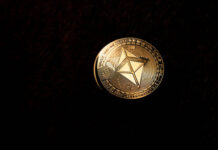The S&P500 traded lower for a third day, the US yields rebounded, as the US reached its debt ceiling yesterday.
Wow, Netflix
Netflix added nearly 7.7 million new subscribers last quarter, versus only around 4.5 mio expected by the market. Harry and Meghan, among other popular shows in the Q4 clearly did the trick. The share popped almost 10% higher in the afterhours trading.
Why not more?
Because the earnings per share largely missed estimates due to a loss related to euro-denominated debt – as the euro rallied 10% from October to the end of the year. But the company’s profit margin still topped analysts’ expectations.
The results have been a relief for Netflix which was trading more than 3% down at yesterday’s close. We will likely see the recovery extend to $350 per share, the levels it was trading before the second big slump last year, in April, but the levels prior to last January slump, around $500 per share seem like a faraway dream.
Especially given that the early-year stock rally is set to gently fade away. The S&P 500 traded lower for the third straight day, having failed to clear a very critical resistance zone, above 4000 level, where the 200-DMA, and the ceiling of the 2022 bearish trend prevented investors from extending the rally into a new, bullish era, with no major justification on the company, or macroeconomic level.
In this sense, P&G hasn’t been as lucky as Netflix. Their sales fell 6% in Q4, after they raised prices 10%. Price increases for P&G products may have hit a critical point where customers are no longer willing to pay for
Mixed bag of news
The Federal Reserve (Fed) is not stepping back from its rate hike talk – despite easing inflation and easing activity – and the Fed officials keep repeating that the rates will go higher, and stay high for a long time.
Major banks and institutions agree that the US is faced with a mild recession.
In the meantime, the US jobs figures continue to look strong enough to justify more rate hikes from the Fed. Yesterday, the US jobless claims fell below 200’000 for the first time since last September, tempering news that Microsoft and Amazon scrap 28’000 jobs, together.
Where do these people go is anybody’s guess.
And if all this is not enough, the US reached its debt ceiling yesterday, and began using special measures to avoid a payments default. US treasury department is altering investments in two government-run funds for retirees – a move that will free enough cash to allow the US government to pay for its expenses until June. Then, we will see.
For now, there are no signs of agreement whatsoever between Republicans and Biden administration. Biden doesn’t want to cut spending.
In the FX
The US dollar index remains under pressure.
The dollar-yen is better bid despite the data showing that inflation in Japan hit 4% in December, as expected.
The EURUSD remains bid below the 1.08 level, while Cable continues flirting with the 1.24 mark.
The euro-sterling is down to the 50 and 100-DMA levels as a result of a surprisingly stronger sterling this week.
Sterling’s strength is the result of a near-record wages growth, and inflation above 10%. But if you ask Mr. Bailey, two months of slowing inflation is ‘the beginning of a sign that a corner has been turned’.
It’s clearly overly optimistic when you think that inflation in Britain is still above 10%.
Worse, Bloomberg’s English Breakfast index is 20% higher on average compared to last year, as the tea bags cost 10% more, the butter block and eggs are 30% more expensive, while milk prices are up by 50%!
Either Mr. Bailey doesn’t eat the breakfast of an average Brit, or he simply doesn’t earn the average salary of a Brit…
Still, the Bank of England (BoE) is expected to hike the interest rates by 50bp at the next policy meeting, and that expectation is giving support to the pound.
In the Eurozone, however, Christine Lagarde sounds way more down to earth. She accepts that inflation around 9% is still ‘way too high’ for Europe and that the European Central Bank (ECB) should continue fighting it with more rate hikes.
A vision that the Swiss National Bank’s (SNB) Thomas Jordan shares, as well. More hikes are probably needed in Switzerland, he said, even though inflation is at a relatively low 2.8%.
A tighter SNB policy, combined with the inflation gap between Switzerland and the US, supports a further downside move in dollar-franc to 0.90 mark.













